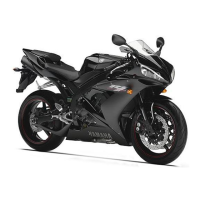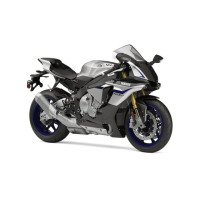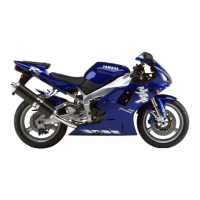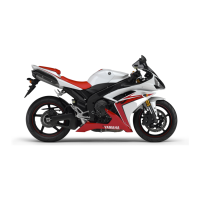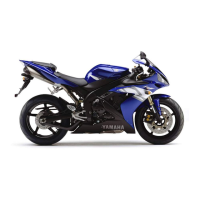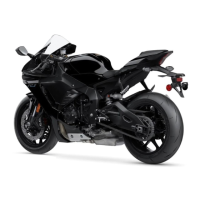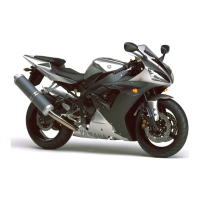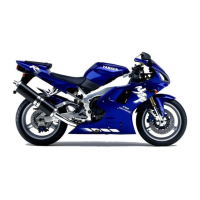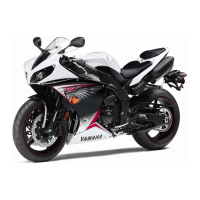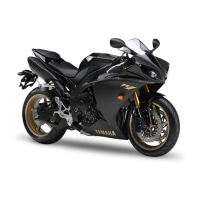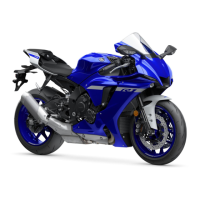
Do you have a question about the Yamaha YZF-R1 Series and is the answer not in the manual?
| Bore x Stroke | 79.0 mm x 50.9 mm |
|---|---|
| Compression Ratio | 13.0:1 |
| Final Drive | Chain |
| Fuel Delivery | Fuel Injection |
| Transmission | 6-speed |
| Front Suspension | Fully adjustable 43mm inverted fork |
| Rear Suspension | Fully adjustable single shock |
| Front Brakes | Dual 320mm hydraulic disc |
| Rear Brakes | 220mm hydraulic disc |
| Front Tire | 120/70ZR17 |
| Rear Tire | 190/55ZR17 |
| Ignition | TCI |
| Engine Type | Liquid-cooled, 4-stroke, DOHC, 4-valve, inline 4-cylinder |
Overview of the motorcycle's features, including display modes, indicators, and system functions.
Guidelines for handling electrical parts and general service procedures.
List of special tools required for tune-up and assembly, with part numbers and reference pages.
Key specifications including model, dimensions, weight, and loading capacity.
Detailed specifications for the engine, fuel system, oil, cooling system, and valve train.
Technical details on the chassis, wheels, tires, brakes, and suspension systems.
Specifications for the electrical system, including voltage, ignition, charging, and lighting.
Crucial torque specifications for engine and chassis fasteners to ensure proper assembly.
Chart detailing maintenance intervals for emission control components based on mileage or time.
Comprehensive chart for general maintenance tasks and lubrication points at various intervals.
Procedure for using the Yamaha diagnostic tool to check the vehicle's systems and retrieve DTCs.
Step-by-step guide for measuring and adjusting valve clearance on a cold engine.
Procedure for synchronizing throttle bodies using a vacuum gauge for optimal engine performance.
Instructions for checking the proper function of front and rear brakes, including lever/pedal operation.
Procedure for checking the brake fluid level, ensuring safety and proper braking performance.
Guide for adjusting the front brake lever position for optimal rider comfort and control.
Procedure for checking front brake pad wear using wear indicators.
Procedure for adjusting the rear brake pedal position for proper rider feel and performance.
Procedure for checking rear brake pad wear using wear indicators.
Critical procedure for bleeding the hydraulic brake system, especially after disassembly.
Procedure for checking wheels for damage, runout, and proper installation.
Guidelines for checking tire pressure, tread depth, damage, and wear limits.
Procedure for checking steering head for looseness or binding and adjusting as needed.
Inspection of front fork inner tubes, legs, and oil seals for damage or leaks.
Procedure for adjusting spring preload on front fork legs, ensuring even adjustment.
Procedure for measuring engine compression pressure to assess cylinder health.
Detailed steps for removing the engine, including muffler, exhaust pipe, and related components.
Procedures for removing, checking, and installing camshafts and related components.
Procedures for removing, checking, and installing the cylinder head and gasket.
General troubleshooting process for the fuel injection system based on MIL status.
General outline for troubleshooting ABS system issues.
General troubleshooting steps for SCU-related issues.
Table of Diagnostic Trouble Codes (DTCs), symptoms, probable causes, and fail-safe operations.
